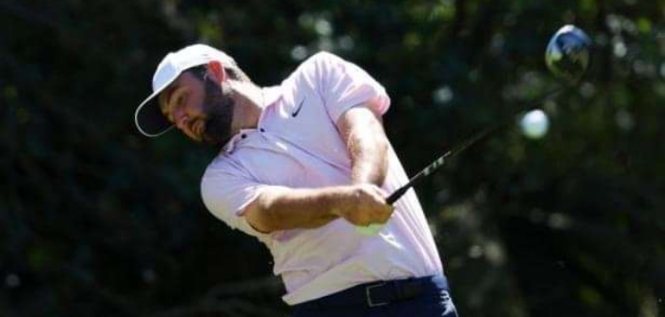This stat reveals Scottie Scheffler revenge on Phil Mickelson confirmed
Scottie Scheffler is absolutely smashing the ball this year. Or is he?
Although Scheffler averages a healthy 300 yards per measured tee shot, he ranks 176th (out of 186 players) for the year on tour in smash factor, a stat generated with the ratio of ball speed divided by clubhead speed. In layman’s terms, smash factor is one indicator of just how efficient a player is swinging the golf club or, perhaps, how efficient the club itself is performing.
Any pro or amateur with access to a launch monitor should pay attention to the smash factor number as it can help reveal, when taken in conjunction with actual ball speed, launch angle and spin numbers, which club the golfer is hitting better. In short, if the launch conditions are similar, the driver with the higher smash factor might be a little more efficient for that player at least distance-wise.
A smash factor of 1.50 is considered highly efficient, and 109 players on tour this year currently have achieved that average, led by Camilo Villegas at 1.517. Scheffler, by comparison, is at 1.479. Still, the numbers of the pros have climbed considerably in the last decade. Ten years ago Robert Allenby led the tour in smash factor at 1.485 and the low was Charlie Beljan with an everyday-player type number of 1.449.
The reasons for the rise are somewhat easily explainable. Players continue to use launch monitors to increase their optimization. “The efficiency of strike and efficiency of release through the hitting zone are two things tour pros are very good at,” says Ben Giunta, owner of The Tour Van, a Golf Digest 100 Best Clubfitting outfit and the primary equipment van for LIV. “If you hit in the middle and the face to path is square, smash factor is going up.”
Improvement in equipment also plays a role. Manufacturers have gotten better at mitigating the loss of ball speed on mis-hits, particularly on drivers, helping boost the smash factor numbers.
Still, Giunta feels that smash factor is not all that important for the pros. They’re all close to or already at 1.5 so there’s not much to chase (Scheffler, for example, might gain a yard or two if at 1.5). Plus, many of those below 1.5, like Scheffler, Sam Burns, Keith Mitchell, Jake Knapp, Xander Schauffele, Gary Woodland and Tony Finau are long hitters, the theory being that swinging as hard as they do brings more off-center strikes, making it difficult to optimize smash factor.
Conversely, many at the top of the smash factor rankings are among the tour’s peashooters. Take Villegas as exhibit A. He ranks 177th in distance and averages just 282 yards per pop.
And therein lies the takeaway for us everyday players. You don’t have to swing fast to be efficient. “Smash factor is an undervalued and underutilized data point in fitting everyday players,” says Giunta. “Everyday players tend to look at distance only. Maybe launch and spin. But smash factor can help lead you to a better fit. Which head and shaft will be better for a certain player and their typical strikes. If a player’s miss is a high toe hit, for example, some drivers will perform better on that hit than others. It also could lead to a ball recommendation. Lower-end balls do not lend themselves to achieving a high smash factor.”
Seeing how many everyday players reside around 1.45 smash factor there is room for significant improvement (in fact, a study by Golf Digest a few years back saw 40 percent of everyday golfers were below 1.40). A 100 mile per hour swing speed producing ball speeds of 145 could get to ball speeds of 150 by raising their smash factor those five points. Is it easy to do? No. But the benefit is more than 10 extra yards off the tee if it can be accomplished.
Now that’s smashing the ball.
